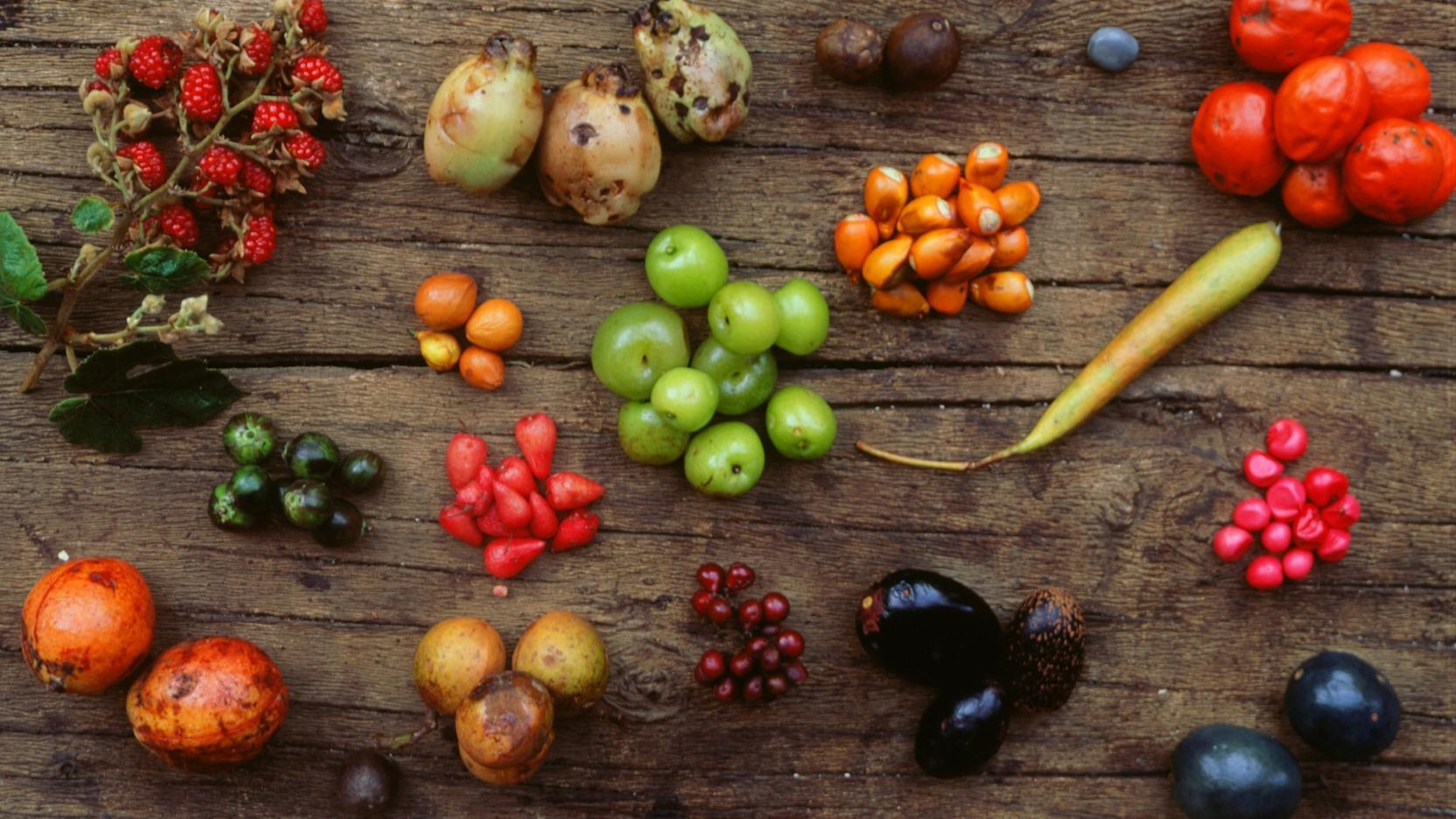A Taste of the Outback: Uncovering Australia’s Most Common Native Fruits and Vegetables
A Taste of the Outback: Uncovering Australia’s Most Common Native Fruits and Vegetables

Australia, a land of vast landscapes and unique wildlife, is also home to a diverse array of native fruits and vegetables. While many of us are familiar with the quintessential Aussie staples like bananas, oranges, and potatoes, there’s a whole world of delicious and nutritious indigenous ingredients waiting to be discovered.
This article delves into the fascinating world of Australian native produce, exploring the most common fruits and vegetables that have been enjoyed by indigenous Australians for millennia. We’ll uncover their unique flavors, nutritional benefits, and the cultural significance they hold.
Related Articles: A Taste of the Outback: Uncovering Australia’s Most Common Native Fruits and Vegetables
- The Gemsbok: A Symbol Of Resilience, A Bridge Between Cultures, And The Meaning Of Hornsea Freeport
- As An Artist, I Am Constantly Struck By The Profound Beauty Of Imperfection: Embracing The Journey Of Creativity
- The Gumleaf: A Unique And Ancient Australian Instrument
- A Journey Through Australia’s Iconic Trees: Unveiling The Secrets Of The Eucalyptus
- Embracing The Spirit Of The Land: A Guide To Aboriginal Australian Girl Names
From Bush Tucker to Modern Cuisine
"Bush Tucker" is a term used to describe the food sources traditionally used by Aboriginal Australians. These foods are not just sustenance but also deeply intertwined with their cultural heritage, traditions, and connection to the land.
Fruits:
1. Quandong (Santalum acuminatum): This small, red, fleshy fruit is often referred to as the "native peach" due to its sweet and tangy flavor. It’s rich in vitamin C, antioxidants, and fiber. Quandongs can be enjoyed fresh, dried, or used in jams, chutneys, and sauces.
2. Davidson Plum (Davidsonia pruriens): This dark purple fruit boasts a unique, tart flavor with hints of blackberry and plum. It’s an excellent source of vitamin C, iron, and antioxidants. Davidson plums are often used in jams, sauces, and desserts.
3. Finger Lime (Citrus australasica): This fascinating fruit, aptly named for its finger-like segments, offers a burst of citrusy flavor. Its juice is often used as a garnish or ingredient in cocktails and salads.
4. Kakadu Plum (Terminalia ferdinandiana): This small, yellow fruit is renowned for being the richest natural source of vitamin C in the world. It has a tangy, slightly sweet flavor and is often used in jams, sauces, and juices.
5. Bush Tomato (Solanum centrale): This small, red fruit has a sweet, tangy flavor with a hint of spice. It’s often used in chutneys, sauces, and as a flavoring agent in stews.

6. Lilly Pilly (Syzygium smithii): This small, red, juicy fruit has a sweet and slightly tart flavor. It’s often enjoyed fresh or used in jams and desserts.
7. Native Grapes (Vitis vinifera): These small, dark purple grapes have a sweet and slightly tart flavor. They are often enjoyed fresh or used in jams and wines.
8. Desert Lime (Citrus glauca): This small, green fruit has a unique, tangy flavor with a hint of citrus. It’s often used as a garnish or ingredient in salads and drinks.
9. Native Currant (Leucopogon juniperinus): This small, red berry has a sweet and slightly tart flavor. It’s often enjoyed fresh or used in jams and desserts.
Vegetables:

1. Warrigal Greens (Tetragonia tetragonioides): This leafy green vegetable has a slightly salty and tangy flavor. It’s a good source of vitamins A, C, and K. Warrigal greens can be steamed, sautéed, or added to soups and salads.
2. Saltbush (Atriplex spp.): This leafy green vegetable has a salty and earthy flavor. It’s a good source of iron, potassium, and antioxidants. Saltbush can be steamed, sautéed, or added to soups and salads.
3. Bush Onion (Bulbine bulbosa): This small, bulbous vegetable has a pungent, onion-like flavor. It’s often used as a flavoring agent in stews and soups.
4. Yam Daisy (Microseris lanceolata): This leafy green vegetable has a slightly bitter and earthy flavor. It’s a good source of vitamins A and C. Yam daisy can be steamed, sautéed, or added to salads.
5. Native Celery (Apium prostratum): This leafy green vegetable has a mild, celery-like flavor. It’s a good source of vitamins A and C. Native celery can be steamed, sautéed, or added to salads.

6. Pigface (Carpobrotus edulis): This succulent plant has a salty and tangy flavor. It’s a good source of vitamins A and C. Pigface can be eaten raw, pickled, or added to salads.
7. Sea Celery (Apium australe): This leafy green vegetable has a salty and tangy flavor. It’s a good source of vitamins A and C. Sea celery can be eaten raw, pickled, or added to salads.
8. Wattle Seed (Acacia spp.): While not technically a vegetable, wattle seed is often used as a flavoring agent in dishes. It has a nutty and slightly sweet flavor.
The Cultural Significance of Native Foods
These native fruits and vegetables are not just ingredients; they are a vital part of Aboriginal culture and identity. They represent a deep connection to the land, its bounty, and the knowledge passed down through generations.
Modern Applications
In recent years, there’s been a growing interest in incorporating native Australian ingredients into modern cuisine. Chefs are finding creative ways to use these unique flavors, bringing a distinct Australian touch to their dishes.
Sustainability and Conservation
The use of native fruits and vegetables also promotes sustainability and conservation. By supporting local producers and incorporating these ingredients into our diets, we can help preserve the rich biodiversity of Australia’s native flora.
Nutritional Benefits
Many native fruits and vegetables are rich in vitamins, minerals, and antioxidants, making them valuable additions to a healthy diet. They also offer a unique flavor profile that can add depth and complexity to dishes.
Where to Find Native Produce
Native fruits and vegetables are becoming increasingly available in farmers’ markets, specialty stores, and online retailers. You can also find them in some supermarkets, especially in areas with a strong indigenous population.
Tips for Using Native Ingredients
- Start with small amounts: Native fruits and vegetables can have intense flavors, so it’s best to start with small quantities and adjust to your taste.
- Experiment with different preparations: Try different methods like roasting, grilling, steaming, or pickling to bring out the unique flavors of each ingredient.
- Pair with complementary flavors: Consider pairing native fruits and vegetables with other ingredients that complement their unique flavor profiles.
- Support local producers: Look for native produce grown by local indigenous farmers and businesses.
FAQs about Australian Native Fruits and Vegetables
1. Are native fruits and vegetables safe to eat?
Yes, native fruits and vegetables are safe to eat. However, it’s always important to identify them correctly and avoid any that are poisonous or have not been properly prepared.
2. Where can I find native fruits and vegetables?
You can find native fruits and vegetables at farmers’ markets, specialty stores, online retailers, and some supermarkets.
3. What are the nutritional benefits of native fruits and vegetables?
Native fruits and vegetables are often rich in vitamins, minerals, and antioxidants, making them valuable additions to a healthy diet.
4. How can I use native fruits and vegetables in my cooking?
There are many ways to use native fruits and vegetables in your cooking. You can use them in salads, soups, stews, sauces, jams, desserts, and more.
5. What is the cultural significance of native foods?
Native fruits and vegetables are a vital part of Aboriginal culture and identity. They represent a deep connection to the land, its bounty, and the knowledge passed down through generations.
Conclusion
Exploring the world of Australian native fruits and vegetables is a journey of taste, culture, and sustainability. By incorporating these unique ingredients into our diets, we can experience the rich flavors and heritage of Australia while supporting the preservation of its natural bounty. So, the next time you’re at the market, consider adding a touch of the Outback to your plate and discover the delicious and nutritious world of Australian native produce.

Closure
Thus, we hope this article has provided valuable insights into A Taste of the Outback: Uncovering Australia’s Most Common Native Fruits and Vegetables. We thank you for taking the time to read this article. See you in our next article!


